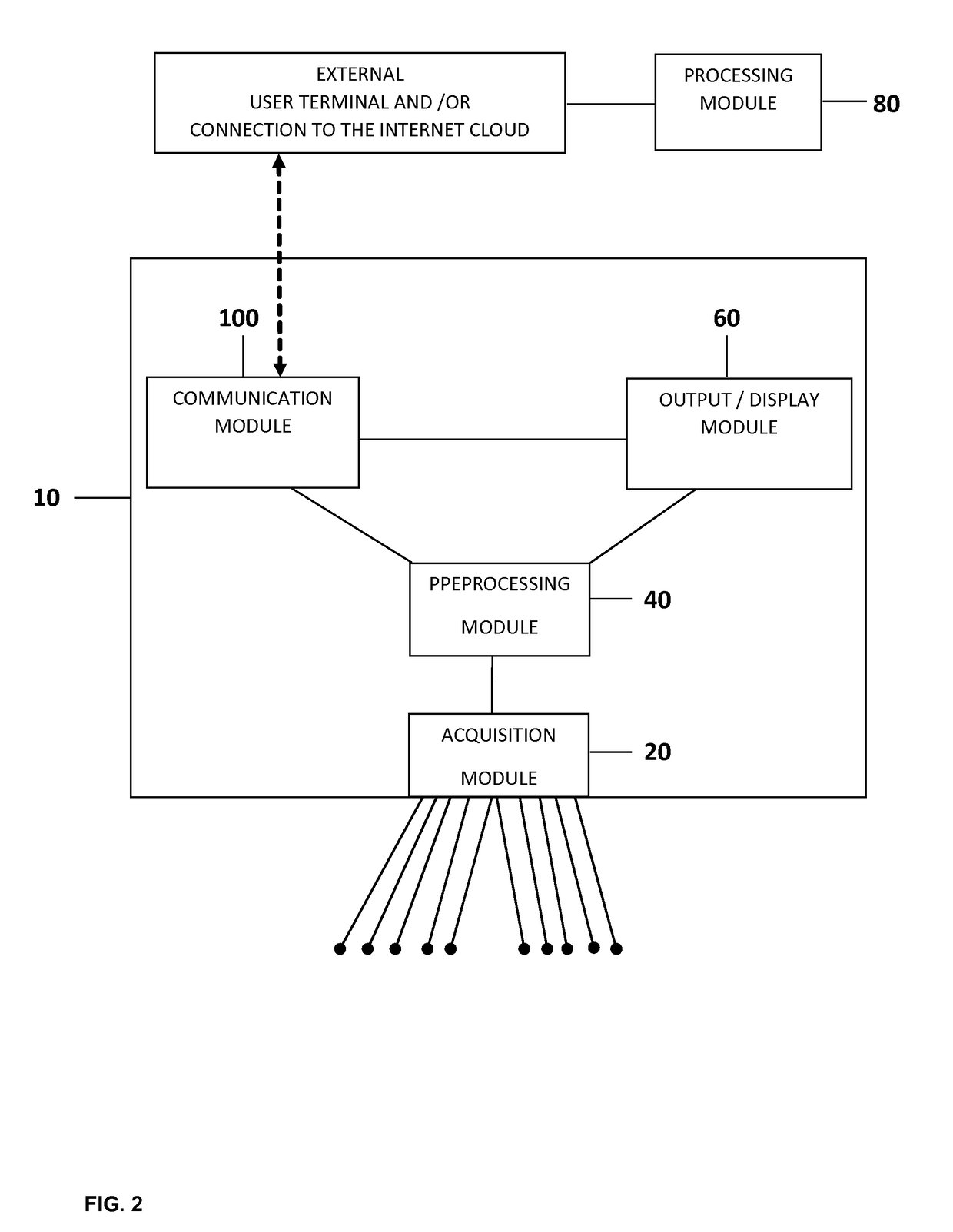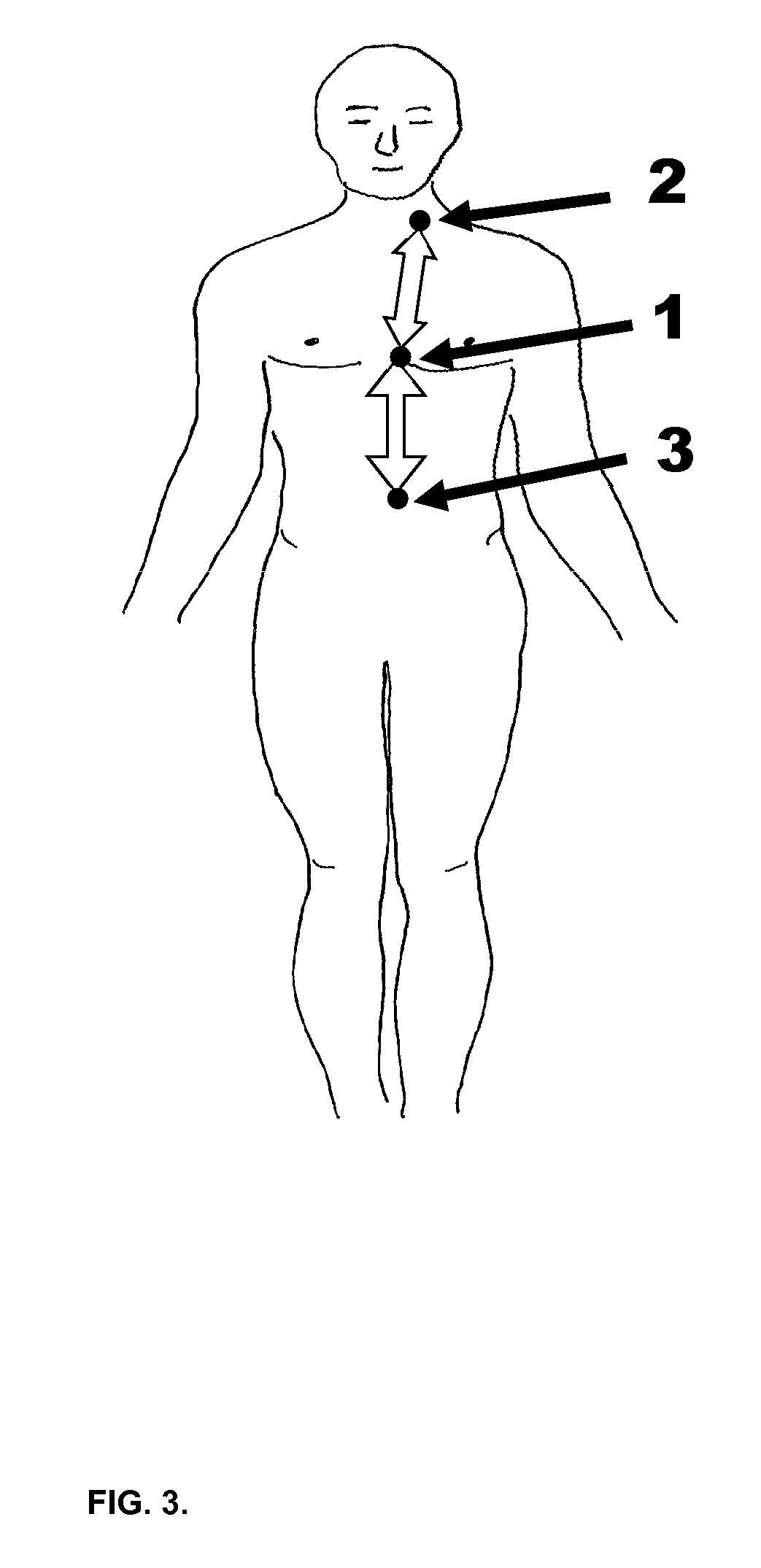Evaluating arterial pressure, vasomotor activity and their response to diagnostic tests
a vasomotor activity and diagnostic test technology, applied in the field of evaluating arterial pressure, vasomotor activity and their response to diagnostic tests, can solve the problems of modest or statistically significant overall effect of vasoactive medications in the studied patient population, and achieve the effects of improved tracking, simple and convenient data acquisition, and high signal-to-noise ratio
- Summary
- Abstract
- Description
- Claims
- Application Information
AI Technical Summary
Benefits of technology
Problems solved by technology
Method used
Image
Examples
example 1
he Effectiveness of Vasoactive Medications
[0099]The following hypothetical example illustrates application of the present invention for testing the efficacy of a vasoactive medication (serelaxin) for managing acute heart failure. Similarly, the present invention can be applied for testing other vasoactive medications and in other patient populations.
[0100]Serelaxin, recombinant human relaxin-2, is a vasoactive hormone that produces multiple hemodynamic effects primarily associated with vasodilation. In patients with acute heart failure (AHF), it increases arterial compliance, cardiac output, and renal blood flow, reduces dyspnea, and moderately decreases systemic arterial and pulmonary wedge pressures (Teerlink et al.; RELAXin in Acute Heart Failure (RELAX-AHF) Investigators. Serelaxin, recombinant human relaxin-2, for treatment of acute heart failure (RELAX-AHF): a randomised, placebo-controlled trial. Lancet 2013; 381: 29-39. Dschietzig et al. Intravenous recombinant human relaxin...
example 2
and Localization of Vascular Abnormalities Using Spatio-Temporal Distribution of Pressure Waves in Major Arteries
[0102]This hypothetical example shows application of the present invention for the detection and localization of vascular abnormalities, including atherosclerotic plagues and aneurisms. A screening procedure is conducted in a hypothetical, 60-year old subject with arterial hypertension and arterosclerosis, using multiple accelerometers attached in vicinity of major arteries around the torso (including the chest, abdomen and back), as well as the neck, head and extremities, as shown in FIGS. 8 and 9. After the initial intervention administered using an exercise stress test, the recovery of the pressure-wave characteristics described above would show any local heterogeneity (irregularity) detected by accelerometers positioned in the region of abdominal aorta. Subsequent ultrasound tests would reveal an aortic aneurism.
example 3
iating Atherosclerotic Loss of Vascular Elasticity from the Contractile State of the Smooth Muscle Activity in Arterial Walls
[0103]Differentiating permanent changes in vascular elasticity due to atherosclerosis from those caused by increased smooth muscle activity is challenging. This hypothetical examples illustrates application of present invention for those purposes.
[0104]In a hypothetical, 50-year old man with arterial hypertension, an initial intervention (exercise stress test) produced a 10% change in the pulse wave velocity compared with the average changes observed in the same age and sex group. A second intervention (Valsalva maneuver) also resulted in 15% change in those parameters compared with age / sex adjusted average values. The typical curved patterns of the relationships between the PWV and diastolic pressure were “flattened” (i.e., the curvatures were largely absent). This led to a conclusion of pronounced atherosclerotic changes of large arteries (as opposed to the ...
PUM
| Property | Measurement | Unit |
|---|---|---|
| time delay | aaaaa | aaaaa |
| pressure | aaaaa | aaaaa |
| transit time | aaaaa | aaaaa |
Abstract
Description
Claims
Application Information
 Login to View More
Login to View More - R&D
- Intellectual Property
- Life Sciences
- Materials
- Tech Scout
- Unparalleled Data Quality
- Higher Quality Content
- 60% Fewer Hallucinations
Browse by: Latest US Patents, China's latest patents, Technical Efficacy Thesaurus, Application Domain, Technology Topic, Popular Technical Reports.
© 2025 PatSnap. All rights reserved.Legal|Privacy policy|Modern Slavery Act Transparency Statement|Sitemap|About US| Contact US: help@patsnap.com



